
Zebras travel up to 500 kilometers – more than any other mammal on Earth. Humans, however, are increasingly limiting the range of movement of zebras and other animals. For example, from 1968 to 2004 a fence blocked the migration of zebras in the Okavango Delta in Botswana. After the obstacle was removed, the animals resumed their migrations. © fotolia
Humans change entire landscapes – by building cities and roads, by farming land, and by exploiting natural resources. What effects does this have on animals and their habitats? Using the GPS location data of more than 800 animals, a team of scientists was able to prove a reduction in animal movements in areas with a high human footprint. Movements of mammals in areas with a high human footprint were found to be on average half to one-third the extent of their movements in areas with a low human footprint. The study was conducted by biologists from the Senckenberg Nature Research Society and the Goethe University Frankfurt, in collaboration with the Max Planck Institute for Ornithology in Radolfzell and the University of Konstanz.
“The closer to humans and their infrastructure, the smaller the habitats used by various types of animals,” summarizes Martin Wikelski, director of the Max Planck Institute for Ornithology in Radolfzell. This reduction in animal movements can have significant consequences for ecosystems, for instance, a reduction in seed dispersal, changes to food chains, and decreasing animal numbers.
Martin Wikelski and his colleagues have identified several root causes for this development: Human infrastructure disturbs and fragments the habitats of wild animals, which limits their movements. The biologists believe that animals such as deer or wild boars increasingly retreat to comparatively small areas of woodland surrounded by human infrastructure. “Species such as zebras, which cover large distances in the wild, can no longer exist in close proximity to humans. Spatial restrictions and the fragmentation of their habitats lead to a decrease in the animals’ numbers,” explains Kamran Safi, a biologist working at the Max Planck Institute for Ornithology.
A second reason for this development may have to do with changes to the animals’ behavior caused by the presence of humans. Animals like urban foxes are more likely to find food when foraging in areas dominated by humans, which means that the distances they need to cover are much smaller than in the wild. Human hunting parties as well as leisure activities such as running profoundly affect the animals’ behavior: The research results show that wild boars and other species adjust their activity times and territories to evade humans. There is also evidence to suggest that animals such as grouse avoid areas that feature ski lifts, funiculars, and alpine sports entirely.
Database for animal movements
For their study, the researchers drew on location data collected for more than 800 terrestrial nonvolant mammals from 57 species which were fitted with GPS transmitters. They then compared the GPS data with the “Human Footprint Index” for the areas the animals moved through. The index measures human influence on landscapes.
This global and cross-species comparison was made possible by “Movebank,” a global database of animal movements. “Movebank” was created by biologists working with Martin Wikelski to track the movement patterns of animals across the globe. The database is free to use (www.movebank.org) and enables researchers to share and compare animal movement data, for instance, to draw inferences about the evolution of the planet’s ecosystems.
Reference: “Moving in the Anthropocene: Global reductions in terrestrial mammalian movements” Marlee A. Tucker, Katrin Böhning-Gaese, William F. Fagan, John M. Fryxell, Bram Van Moorter, Susan C. Alberts, Abdullahi H. Ali, Andrew M. Allen, Nina Attias, Tal Avgar, Hattie Bartlam-Brooks, Buuveibaatar Bayarbaatar, Jerrold L. Belant, Alessandra Bertassoni, Dean Beyer, Laura Bidner, Floris M. Van Beest, Stephen Blake, Niels Blaum, Chloe Bracis, Danielle Brown, P. J. Nico De Bruyn, Francesca Cagnacci, Justin M. Calabrese, Constança Camilo-Alves, Simon Chamaillé-Jammes, Andre Chiaradia, Sarah C. Davidson, Todd Dennis, Stephen Destefano, Duane Diefenbach, Iain Douglas-Hamilton, Julian Fennessy, Claudia Fichtel, Wolfgang Fiedler, Christina Fischer, Ilya Fischhoff, Christen H. Fleming, Adam T. Ford, Susanne A. Fritz, Benedikt Gehr, Jacob R. Goheen, Eliezer Gurarie, Mark Hebblewhite, Marco Heurich, A. J. Mark Hewison, Christian Hof, Edward Hurme, Lynne A. Isbell, René Janssen, Florian Jeltsch, Petra Kaczensky, Adam Kane, Peter M. Kappeler, Matthew Kauffman, Roland Kays, Duncan Kimuyu, Flavia Koch, Bart Kranstauber, Scott Lapoint, Peter Leimgruber, John D. C. Linnell, Pascual López-López, A. Catherine Markham, Jenny Mattisson, Emilia Patricia Medici, Ugo Mellone, Evelyn Merrill, Guilherme De Miranda Mourão, Ronaldo G. Morato, Nicolas Morellet, Thomas A. Morrison, Samuel L. Díaz-Muñoz, Atle Mysterud, Dejid Nandintsetseg, Ran Nathan, Aidin Niamir, John Odden, Robert B. O’Hara, Luiz Gustavo R. Oliveira-Santos, Kirk A. Olson, Bruce D. Patterson, Rogerio Cunha De Paula, Luca Pedrotti, Björn Reineking, Martin Rimmler, Tracey L. Rogers, Christer Moe Rolandsen, Christopher S. Rosenberry, Daniel I. Rubenstein, Kamran Safi, Sonia Saïd, Nir Sapir, Hall Sawyer, Niels Martin Schmidt, Nuria Selva, Agnieszka Sergiel, Enkhtuvshin Shiilegdamba, João Paulo Silva, Navinder Singh, Erling J. Solberg, Orr Spiegel, Olav Strand, Siva Sundaresan, Wiebke Ullmann, Ulrich Voigt, Jake Wall, David Wattles, Martin Wikelski, Christopher C. Wilmers, John W. Wilson, George Wittemyer, Filip Zięba, Tomasz Zwijacz-Kozica and Thomas Mueller, 26 Jan 2018, Science.
DOI: 10.1126/science.aam9712

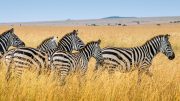

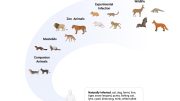

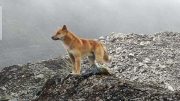
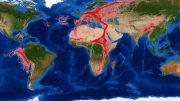
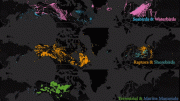

Be the first to comment on "Biologists Track Global Reductions in Terrestrial Mammalian Movements"